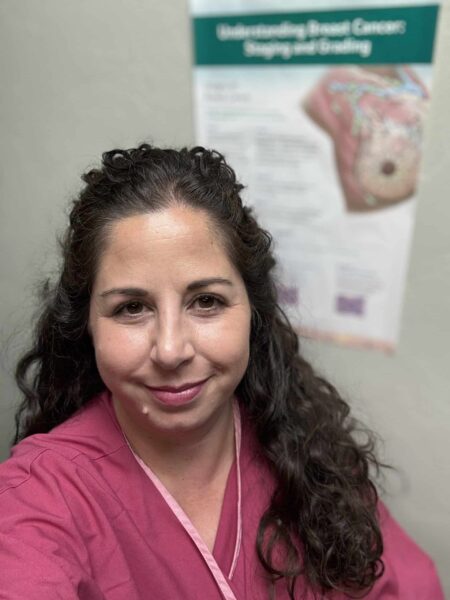From Diagnosis to Advocacy: My TNBC Breast Cancer Journey

During the height of the global pandemic, my surgical oncologist confirmed my biggest fear—the lump I had felt was, in fact, breast cancer. Despite learning of my BRCA1 status at the age of 33 and diligently undergoing imaging due to my high-risk status, I was diagnosed with Stage 2B triple-negative breast cancer (TNBC) at 35. TNBC grows quickly, and had I not been aware of my genetic mutation or closely monitored, my diagnosis could have been later-stage and possibly terminal.
Undergoing cancer treatment in the midst of the pandemic was terrifying and isolating. Six months of chemotherapy, multiple surgeries—including a double mastectomy—and countless IV fluids and doctor’s appointments were all done solo, masked, and with the fear that I would not reach my 40th birthday.
I am grateful to share that I celebrated my 40th birthday in January! Support organizations, such as Sharsheret, were critical in helping me navigate treatment and survivorship. Personal calls from Sharsheret provided meaningful support as I pushed through 16 rounds of chemo, and their assistance in getting a wig was incredibly meaningful. My long, thick, dark-brown hair was a signature part of who I was, and losing it—along with my breasts, eyebrows, and eyelashes—made me feel as though much of what made me feminine and whole was being stripped away. Living in Tucson, Arizona, where wig shops are few and far between, having the opportunity to receive a customized wig from New York was a much-needed source of comfort during a very difficult time.
I’m incredibly thankful to be kicking off my 40s four years cancer-free. I strive to take the pain and fear I faced and turn it into advocacy for those navigating a cancer diagnosis or at greater risk. A few pieces of advice I’ve learned along the way:
- Know your risk factors and have these discussions with your physician(s) early on.
- Advocate for yourself. You know your body better than anyone—if something feels off, speak up. Also, advocate for others and the broader cancer community. Especially as Medicaid, Medicare, and critical research are facing cuts.
- Get to know YOUR normal and “feel it on the first.” Perform a monthly breast self-exam at the same time each month. While this does not replace imaging, being aware of changes in your own breasts through a quick self-check could save your life.
Discovering my lump through a self-exam, combined with knowing my BRCA1 status, is why I believe I’m here today. Finally, remember—no one fights alone. As a TNBC survivor, I am always here to support, encourage, and be a resource for those in the cancer community.
